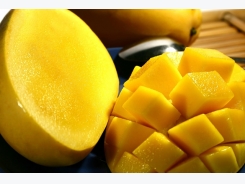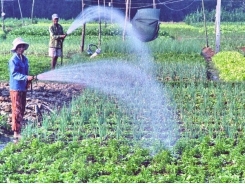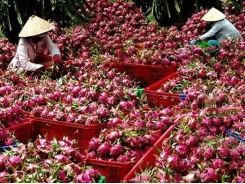Tips for feeding livestock agro-industrial waste

Sugar beets are a prime example of a human staple that produces both wet and dry feed ingredients of the highest value, yet one that remains undervalued globally. | Wessel Cirkel, Dreamstime
This is a delicate exercise that often ends up in a disaster, but with the help of experienced professionals, it can result in significant feed cost savings.
There are countries or regions within large countries that are net exporters of cereals and legumes. In these areas, prices of such staple feed ingredients tend to be the lowest possible. Yet the remaining world is constantly on the lookout for less expensive raw materials, as affected by increased volume purchases or bargain deals sometimes associated with lower quality grains. What remains undisputable, however, is that of low profitability that characterizes animal production globally.
To counterbalance the volatile and often unpredictable animal production profitability, producers and feed manufacturers often search for alternative sources of energy and protein. This is not an easy proposition, but at the same time, one that involves considerable savings and consequently margins for profit if done correctly. Here we will evaluate the pros and cons of using alternatives in animal feeds and how to profit from them.
Quality at origin
The human food industry produces an enormous amount of “waste” material. A prime example can be the beer industry that uses barley, wheat and rye to extract and process their starch and sugars, leaving “spent grains” as a material of no further value to the final product: beer. Considering how much beer is consumed worldwide, it makes one wonder why brewery spent grains are not featuring in almost every animal feed formula.
Traditional thinking has ruminants as the main target of agro-industrial waste material; times, however, have changed.
One of the main advantages of such products is their quality. Industries like those catering to the human food chain must comply with the strictest rules of safety and hygiene; thus, their waste material originates from the best possible raw materials, something we cannot ignore, but neither take for granted. Quite often, waste materials that have been preserved at the food industry plant under the same conditions as those employed for their main products end up reaching the animal at a much inferior state. This is often the outcome of improper handling, transportation and storage once such feed materials leave the plant. It is thus our responsibility to ensure the high value of waste material throughout the process of animal feed preparation and feeding if we are to benefit from their true value.
Volume versus availability
One of the main complaints of animal feed producers and even producers who endeavor to mix their own feeds is that of availability. Industries that produce suitable waste materials that can be converted into animal feeds abound in each country. Even if they are not remotely located, and quite often they are not, they tend to cluster around major cities where animal production is either prohibited or prohibitively expensive. And, when this is not the case, then volume is rarely enough to feed all animals in large farms. This creates a logistics nightmare that is usually avoided by sticking to corn-soya rations that we all know so well.
The solution to such a problem is not easy, and not one that can be employed by all. The most profitable way of resolving the dual problem of volume and availability is that of establishing an independent entity that collects, mixes and prepares all possible ways into a form that can be delivered to users like corn and soya. One such example is bakery meal. There are a great number of industries that produce bakery waste: bread, breakfast cereals, cookies, pasta, confectionary, sweets, potato chips, etc. Trying to source enough volume from a single industry at a given location is rather unrealistic. Instead, if a trader/manufacturer was to source all of the above, mix them into a new product and market it as sweet or salty bakery meal with a standard nutrient specification then the problems of volume and availability would be reduced.
Seasonality of most products
Beer is produced throughout the year, and so is bread. But sugar beets are harvested and processed once annually, and this creates a spike in sugar beet pulp availability with a consequent drop in price only to be followed by reduced offer and increased prices. This can be resolved by switching ingredients to fit seasonal patterns or buying large volumes when prices are low. Both require an extra level of expense, but not a significant one if the full potential of such ingredients is expressed through maximal inclusion levels. For example, where sugar beet pulp is usually included at 10 percent in a typical formula, doubling its concentration where applicable can offer feed cost savings. This is, of course, a rather aggressive proposition that requires the services of a most experienced nutritionist and, of course, the best possible ingredients to begin with.
Ruminants and monogastrics
Traditional thinking has ruminants as the main target of agro-industrial waste material; times, however, have changed. There are two reasons behind this old-fashioned thinking: one, ruminants can easily consume such material in their primarily wet state, and two, ruminants can extract more value from the high-fiber concentration of such waste materials. Drying waste material of the agro-industrial industries increases their cost as energy is never cheap enough at least not anymore! Thus, only the most valuable ingredients are dried. Such is the example of corn gluten meal that contains 60 percent protein, but not that of corn gluten feed that is also available as wet feed.
Whereas feeding poultry a wet ingredient is not suitable for mass-produced birds (although a very fine proposition for true free-range farms), pig farms could easily adapt to feeding wet materials. This does not always require the mixing of wet and dry materials, although this is the norm, as separate feeders for each form can be used in the same pen. Again, this might sound simple enough, but a qualified nutritionist is required to set up the whole process. And for those who still consider that pigs (and poultry) cannot be profitable when fed such non-traditional ration, please consider that pigs and poultry were fed exactly on such diets before farming became the industry it has become today.
Product quality
Meat, milk and eggs are the primary products of farmed animals, and it is important to consider the effect of their quality (and safety) each time we aim to change their feeding patterns. As for safety, this is entirely dependent on us, and we must strive to preserve the high quality of the waste material as delivered at the plant’s gate. Subpar material should be rejected outright, and the plant should be notified to change its methods.
As far as quality is concerned, it would be difficult (but not impossible) to negatively affect it without going to extremes. Here, dried distiller’s grains with solubles (DDGS) comes to mind. This ethanol waste material is just corn without its starch hard to harm meat, milk and egg quality with an ingredient that is already used in animal feeding, but again, not impossible. Feed enough DDGS, and the fat on these products will become soft, too soft, indeed. And, although this might not be of any safety concern, and even not even a quality problem in some cases, there are some cases where soft fat is undesirable, like in sausage making, for example. Usually, a nutritionist with experience in feeding such agro-industrial waste materials will also know of potential hurdles and adjust their use to avoid quality issues.
Có thể bạn quan tâm
Phần mềm

Phối trộn thức ăn chăn nuôi

Pha dung dịch thủy canh

Định mức cho tôm ăn

Phối trộn phân bón NPK

Xác định tỷ lệ tôm sống

Chuyển đổi đơn vị phân bón

Xác định công suất sục khí

Chuyển đổi đơn vị tôm

Tính diện tích nhà kính

Tính thể tích ao hồ




 Tiền Giang tightens quality control of star apples
Tiền Giang tightens quality control of star apples  Mekong Delta city expects to increase fruit exports
Mekong Delta city expects to increase fruit exports